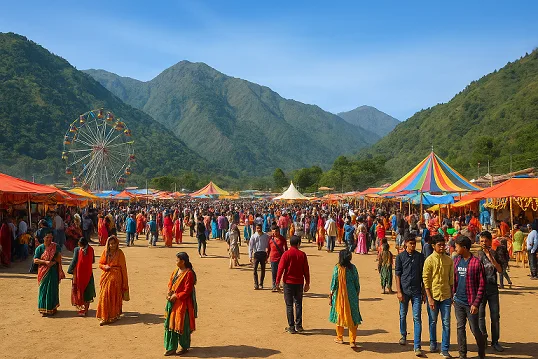History of IIT Roorkee – A Detailed Journey of India’s Oldest Engineering College

Mohit Bangari
Explore Himalaya With Me!!

IIT Roorkee, one of India’s premier institutions, has a history that dates back to the colonial era. It is the oldest engineering college in India and has played a crucial role in shaping the country’s technical education system. Established in 1847 as Thomason College of Civil Engineering, it later became the University of Roorkee before being converted into an IIT in 2001.
In this article, we will take a detailed look at the history of IIT Roorkee, covering its establishment, transformation, key milestones, contributions to engineering and research, and its impact on India’s growth.
1. Establishment of Thomason College (1847)
During British rule, the demand for civil engineers was increasing due to large-scale infrastructure projects like canals, railways, and bridges. The British government decided to set up a dedicated engineering college to train professionals in civil engineering.
In 1847, James Thomason, the then Lieutenant-Governor of the North-Western Provinces (now Uttar Pradesh and Uttarakhand), founded the Thomason College of Civil Engineering in Roorkee. The primary purpose of this college was to train engineers for the construction of the Ganga Canal, one of the most ambitious projects of that time.
Initially, the college offered training programs in civil engineering, with a special focus on irrigation and public works. The curriculum was designed to equip students with practical knowledge, making them ready for immediate deployment in British engineering projects.
—
2. Growth and Development in the 19th and 20th Century
Thomason College continued to evolve throughout the 19th century, gaining recognition for its excellence in technical education. Some key milestones include:
1853 – The first batch of students graduated from the college.
1854 – The college started offering structured courses in civil engineering.
1864 – The college introduced mechanical engineering courses.
1872 – It became the first institution in India to grant degrees in civil engineering.
1892 – Electrical engineering courses were introduced.
In the early 20th century, the college expanded further:
1901 – Architecture and structural engineering courses were introduced.
1911 – The college played a crucial role in training engineers for India’s growing railway network.
1945 – Courses in electronics and telecommunications were introduced.
By this time, Thomason College had become the most prestigious engineering institution in India, producing skilled engineers who contributed significantly to the country’s infrastructure.
—
3. Transition to the University of Roorkee (1949)
After India gained independence in 1947, the need for high-quality technical education increased. Recognizing the legacy of Thomason College, the Government of India decided to upgrade it into a full-fledged university.
In 1949, it was renamed the University of Roorkee, making it India’s first engineering university. This was a major milestone, as the institution expanded beyond civil engineering and introduced new disciplines such as:
Mechanical Engineering
Electrical Engineering
Electronics and Communication Engineering
Metallurgical Engineering
Chemical Engineering
The University of Roorkee became the first in India to offer postgraduate and doctoral programs in various branches of engineering. It also focused on research and development, collaborating with government and private organizations to drive technological innovation.
—
4. Becoming IIT Roorkee (2001)
With India’s rapid technological advancement, the government decided to expand the Indian Institutes of Technology (IITs) network. The University of Roorkee was identified as a prime candidate due to its legacy, academic excellence, and research contributions.
On September 21, 2001, the Government of India passed an ordinance converting the University of Roorkee into IIT Roorkee. It became the seventh IIT in India and the first one created by converting an existing university.
This transformation brought several changes:
Increased government funding for research and infrastructure.
Greater autonomy in designing academic programs.
Enhanced collaboration with international universities and research centers.
Expansion of departments to include Biotechnology, Computer Science, and Management Studies.
Today, IIT Roorkee is recognized globally for its contributions to engineering, technology, and innovation.
—
5. Contributions to Engineering and Research
IIT Roorkee has made significant contributions in various fields:
Civil Engineering & Infrastructure Development
IIT Roorkee-trained engineers have played a key role in constructing major dams, bridges, and highways in India.
The institution has provided expertise for earthquake-resistant buildings.
Water Resources & Irrigation
IIT Roorkee has been at the forefront of water resource management, contributing to the development of hydroelectric projects and canal systems.
Military and Defense Research
The institution has collaborated with DRDO (Defence Research and Development Organisation) to develop advanced technologies for defense applications.
Space Research & Collaborations with ISRO
IIT Roorkee alumni have contributed to India’s space missions, including Chandrayaan and Mangalyaan projects.
Startups & Entrepreneurship
IIT Roorkee has established incubation centers to support startups in AI, robotics, and sustainable energy.
—
6. Campus and Facilities
IIT Roorkee has one of the most beautiful and well-equipped campuses in India. Some key facilities include:
James Thomason Building – One of the oldest structures, reflecting British-era architecture.
Central Library – One of the largest technical libraries in Asia.
Sports Complex – Equipped with modern facilities for various sports.
Hostels – Comfortable accommodation for students.
Entrepreneurship Development Cell (EDC) – Helps students launch their startups.
The campus blends history with modernity, preserving its heritage while embracing new-age technology.
—
7. Notable Alumni of IIT Roorkee
IIT Roorkee has produced some of the finest engineers, scientists, and entrepreneurs in India. Some notable alumni include:
Narendra Singh Kapany – Known as the “Father of Fiber Optics.”
G. D. Agrawal – Environmental scientist and water conservationist.
Vinod Scaria – Bioinformatics expert.
Sundar Pichai (CEO of Google) – Studied at IIT Kharagpur but has collaborated with IIT Roorkee on projects.
The alumni network of IIT Roorkee is spread across the world, contributing to research, industry, and policymaking.
—
8. Conclusions
IIT Roorkee is not just an engineering institution; it is a symbol of India’s technical progress. From its beginnings as Thomason College in 1847 to becoming an IIT in 2001, it has played a vital role in shaping the country’s engineering landscape.
With its commitment to excellence, research, and innovation, IIT Roorkee continues to inspire generations of engineers and scientists. It is a legacy that blends history with modern technological advancements, making it a true pride of India.
– By Mohit Bangari
Also Read – Story of Jeetu Bagdwal – A Folk Legend of Uttarakhand
Related Post

Mohit Bangari
Explore Himalaya With Me!!








1 thought on “History of IIT Roorkee – A Detailed Journey of India’s Oldest Engineering College”
I saw a lot of website but I believe this one has got something special in it in it